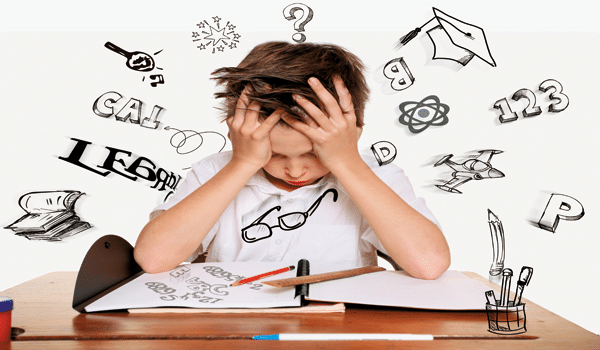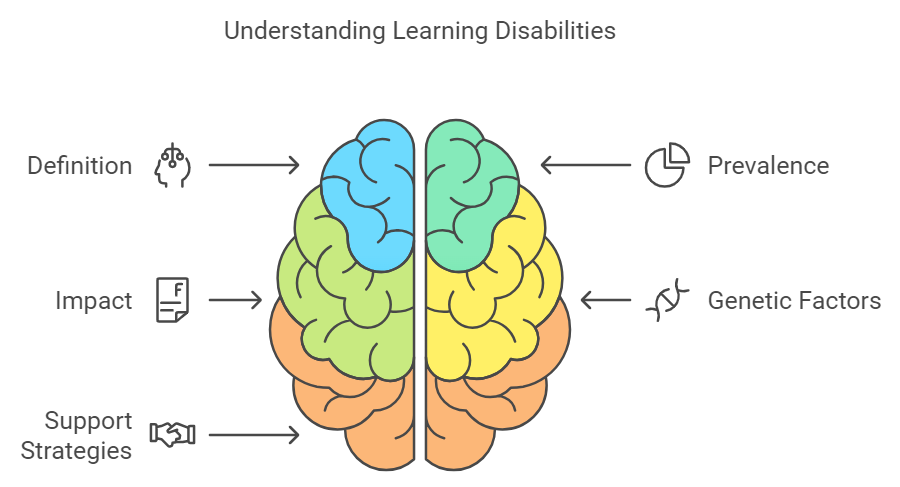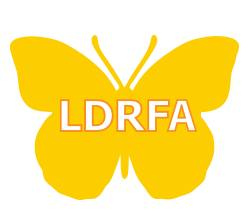What Is A Learning Disability?
Learning disabilities can be incredibly isolating, but they’re also extremely common. That is why it’s important to know the most common learning disabilities and recognize their symptoms.
Table of Contents
ToggleLearning Disability: Definition
According to the National Institute Of Neurological Disorders and Stroke (NINDS), learning disabilities are:
Learning disabilities are disorders that affect the ability to understand or use spoken or written language, do mathematical calculations, coordinate movements, or direct attention. Although learning disabilities occur in very young children, the disorders are usually not recognized until the child reaches school age.
– Source: NINDS
What Are Learning Disabilities?
A learning disability is a neurological disorder that affects a person’s ability to process and understand information. It can affect a person’s ability to read, write, listen, speak, spell, and do the math. Learning disabilities are not the same as intellectual disabilities, and they do not reflect a person’s intelligence or motivation.

Learning disabilities can range in severity and may affect only one specific skill or a combination of skills. They are usually present from birth or early childhood and can persist throughout a person’s life.
Some people with learning disabilities may need accommodations in order to succeed academically and professionally, while others may be able to overcome their challenges with extra support and effort.
Learning disabilities can be incredibly isolating, but they’re also extremely common.
The good news is that thanks to advances in medicine and technology, there are ways to treat these conditions so they don’t become insurmountable obstacles.

Learning Disabilities Facts
- Research shows that 8 to 10 percent of American children under 18 years of age have some type of learning disability. (Source: NINDS)
- 2.3 million students are diagnosed with specific learning disabilities (SLD) and receive services under IDEA. This represents 35% of all students receiving special education services. (Source: LDA)
- 75% – 80% of special education students identified as LD have basic deficits in language and reading. (Source: LDA)
- 60% of adults with severe literacy problems have undetected or untreated learning disabilities (Source: LDA)
VIDEO: Learning Disabilities, What Are the Different Types?
How Learning Disabilities Effect People
Learning disabilities can affect people in different ways and to varying degrees. Some people with learning disabilities may struggle with specific skills, such as reading or math, while others may have more general difficulty with learning and processing information.
Learning disabilities can make it difficult for a person to succeed academically and may lead to low self-esteem, frustration, and difficulty with social interactions. However, with the right support and accommodations, many people with learning disabilities are able to overcome their challenges and achieve success in school and in life.
It is important to remember that learning disabilities do not reflect a person’s intelligence or motivation and that every person with a learning disability is unique and has their own strengths and challenges.
Who Can Develop Learning Disabilities?
Learning disabilities can develop in people of all ages, races, and socio-economic backgrounds. They are usually present from birth or early childhood, and they can persist throughout a person’s life.
Anyone can be affected by learning disabilities. There are many well-known celebrities with learning disabilities who managed to overcome and succeed despite learning difficulties
Learning disabilities can be inherited, similar to other traits that are passed down through families through genes. It is common for people with learning disabilities to have other family members who have also struggled with learning. This suggests that there may be a genetic component to learning disabilities.
Certain factors may increase the risk of developing a learning disability, such as premature birth, low birth weight, and exposure to toxins or infections during pregnancy. However, in many cases, the cause of a learning disability is unknown.
Learning Disabilities in Adults vs Children.
Learning disabilities can affect people of all ages, and the challenges and impacts of a learning disability may be different for children and adults.
Signs of Learning Disabilities in Children
For children, learning disabilities can make it difficult to keep up with their peers academically and may lead to frustration and behavioral issues. Children with learning disabilities may also struggle with social interactions and have low self-esteem. It is important for children with learning disabilities to receive appropriate support and accommodations in order to succeed academically and emotionally.
Signs of Learning Disabilities in Adults
For adults, learning disabilities can continue to affect their ability to learn and process information. However, adults may have developed coping mechanisms and strategies to help them compensate for their learning challenges. They may also have more life experience and resources, such as support from friends and family, to help them manage their learning disability.
It is important to remember that every person with a learning disability is unique, and the impact of a learning disability can vary greatly depending on the individual.
List of Top Learning Disabilities
5 Most Common Learning Disabilities
1. Dyslexia
Dyslexia is the number one learning disability that affects people of all ages. It affects a person’s reading and language processing skills.
Some symptoms of dyslexia include:
- Reversing the position of letters
- Difficulty with phonological awareness (the ability to break down words into their constituent sounds)
- Struggle with reading comprehension
- Delayed speech
- Difficulty learning auditory processing disorder new vocabulary or rhymes
- Having disorders in visual processing may have trouble understanding directions
- Affects spelling, copying from text, proofreading, reading comprehension
VIDEO: What is Dyslexia
2. ADHD
ADHD, or Attention Deficit Hyperactivity Disorder, is a neurodevelopmental disorder that affects a person’s ability to pay attention, control impulsivity, and regulate their level of hyperactivity. It’s the second most common learning disability and can affect people of all ages, although it is most often diagnosed in children.
Note: It’s important to note that attention deficit hyperactivity disorder (ADHD) and autism spectrum disorders (ASD) are not the same as learning disabilities. (Source: Disabled World)
Over 6 million children are diagnosed with paying Attention-Deficit/Hyperactivity Disorder (ADHD)
ADHD makes it difficult to concentrate, which can lead to one child distracting others around them in a classroom setting. Many children with ADHD are disciplined for misbehaving, but they can’t control their actions.
ADHD if not treated, can interfere with a person’s ability to succeed academically and socially, and may lead to challenges in relationships and employment.
Symptoms of ADHD include difficulty paying attention, impulsivity, and hyperactivity.
- Inability to sit still
- Being disorganized or forgetful
- Difficulty staying quiet and attentive
- Lack of motivation
- Mood swings or emotional outbursts
VIDEO: What is ADHD
3. Dyscalculia
Dyscalculia is a learning disability that affects math skills. It can make it difficult for a person to understand math concepts, perform arithmetic calculations, and solve math problems.
Lots of people dislike math, but they’re eventually able to understand it with enough practice. Dyscalculia is more severe because it’s diagnosing a learning disability that makes it challenging to understand even the most basic math concepts. Since math builds upon itself, children with dyscalculia can fall behind and struggle to catch up for years.
Symptoms of dyscalculia may include:
People with dyscalculia have difficulty understanding math concepts, difficulty with basic arithmetic operations (such as addition, subtraction, multiplication, and division), and difficulty with more complex math skills (such as algebra and geometry).
- Struggling with mathematical concepts such as measuring, time, and estimating
- Being unsure of how to do basic math problems
- Difficulty following the order of operations
- Finding it challenging to count and group numbers together
VIDEO: Understanding Dyscalculia: Symptoms Explained
4. Dysgraphia
Dysgraphia is a learning disability that affects a person’s ability to write. It can manifest as difficulty with spelling, poor handwriting, or trouble putting thoughts on paper.
Dysgraphia can be caused by a variety of factors, including neurological conditions, developmental delays, or difficulty with fine motor skills.
Symptoms of dysgraphia may include:
- Difficulty with written expression
- Messy handwriting
- Taking a long time to write
- Struggling to express thoughts in a clear sentence structure
- Poor grammar
- Problems organizing thoughts and ideas in writing,
- Difficulties organizing pages, chapters, books
VIDEO: What Is Dysgraphia in Kids?
5. Dyspraxia
Dyspraxia is a neurological disorder that affects a person’s ability to plan and coordinate movement. It can affect fine motor skills, such as writing or tying shoelaces, as well as gross motor skills, such as balance and coordination.
Dyspraxia can also affect a person’s ability to process information and perform tasks in the correct order. It is often referred to as developmental coordination disorder (DCD) and is thought to be caused by problems with the brain’s ability to process information about movement and coordination. Dyspraxia can be diagnosed through a combination of medical and educational assessments, and treatment may involve physical therapy, occupational therapy, and specialized education services.
Although dyspraxia is a condition that affects someone’s motor skills, it still has the potential to hinder affect specific learning.
Dyspraxia mostly interferes with hand-eye coordination skills. Dyspraxia presents itself differently in each affected person, but some symptoms include poor balance and struggling with fine-motor tasks.
Other Common Learning Disabilities
Auditory and visual processing disorders
Auditory and visual processing disorders are neurological conditions that can cause difficulty in processing information from sound and sight. This can be caused by a brain injury, such as a concussion, or it may be due to a genetic disorder. These issues can make it tough for you to learn how to read and write, especially if you have trouble discerning the sounds of letters or words. It can also prevent you from understanding math concepts such as ratios and percentages because they’re not presented visually in the same way as words on a page are.
Auditory-processing difficulties are often misdiagnosed as ADHD because they both involve poor attention—but with auditory processing issues, your attention isn’t wandering because there’s something else competing for your focus; it’s just very hard for you to focus on anything at all!
Executive functioning issues (poor planning and prioritization)
Executive Function Disorder is also common. EFD is not a specific disorder, but rather a term used to describe difficulties with executive functions that are not due to other medical or psychiatric conditions.
Executive function disorder (EFD) is a term used to describe a range of difficulties with executive functions, which are mental skills that help us plan, focus attention, remember instructions, and multitask. These skills are important for organizing, prioritizing, and completing tasks, as well as regulating emotions and behaviors.
People with EFD may have difficulty with one or more executive functions, and this can affect their ability to perform well in school, work, and other areas of life.
Planning and prioritization are important for schoolwork, work, life in general, relationships, and health. Poor planning leads to missed deadlines, forgotten meetings, unfinished tasks, and poor performance at work or school. Poor prioritization leads to the inability to choose between competing activities or tasks that need to be completed first. Students with executive functioning issues may have difficulty determining which assignments take precedence over others when numerous due dates approach simultaneously.
When it comes time for social interactions such as parties or weddings (which require you to prioritize your time), this disability can create problems when several people want your attention at once. You may not know how long each conversation will last so you don’t know how much time each person should get until they get upset at being ignored by you because they show signs of frustration in their tone of voice while waiting on an answer from you that never comes back within the expected amount of time (or ever).
Conclusion
Learning disabilities are extremely common and can affect people of all ages. They can impact a person’s ability to learn, process information, and perform certain tasks.
The top five most common learning disabilities are dyslexia, ADHD, dyscalculia, dysgraphia, and dyspraxia.
Each of these conditions can present with a range of symptoms and can be diagnosed through a combination of medical and educational assessments.
It is important to seek help if you or someone you know is struggling with a learning disability, as early intervention can make a significant difference in managing the condition and achieving success in school and other areas of life.
If you suspect that you or a loved one has a learning disability LD Resources Foundation is here to help. Check out our resources to help you better understand your condition and find the help you need.


